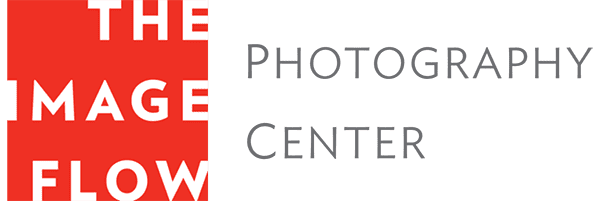As I am preparing to teach another Gum Bichromate Workshop at The Image Flow, I think of one topic I did not delve too deeply into the first time around. This is the importance of black to the multi-color gum bichromate print.
I start my gum bichromate printing process with three color-separated negatives: one for cyan, one for magenta and one for yellow. With these three colors, the patient printer can achieve the beautiful color depth of tri color gum bichromate printing.
It is usual for me to print a minimum of nine layers: three layers with light pigment densities of Indian Yellow, Quinacridone Magenta, and Ultramarine (Green Shade). I follow that with a higher pigment density and build up the midtones, followed by less time to add density to just the shadows. Much of the time, I find myself wanting to add clarity or punch to certain areas. When I want to add a little snap to the images, beef it up, and add emphasis, I reach for my tubes of black.
The three main black watercolors that I use are Payne’s Grey, Ivory Black, and Lamp Black. (I use Winsor Newton and Daniel Smith watercolors.)
Payne’s Grey is one of my favorite colors beyond the big three process colors of CMY in tri color gum bichromate printing. It is more cold moodiness when your cyan is not giving you what you want. You can use this globally and even substitute it in place of the midtone cyan layer if you desire that dreamscape to shine through.
Next in order of strength is Ivory Black. This is easy to work with and gives a moderately transparent, warm black. Use it lightly, over two layers to dial it in perfectly.
Finally, when you want those shadows to be matte black, black hole black, then turn your attention to Lamp Black when gum printing. I use this sparingly on a work, only once and always the last layer. I learned this the hard way. It is almost like carbon printing, where you are adding thickness to the surface, which can come off with subsequent layers.
In the image example titled: a light in the dark, I added an Ivory Black layer in just the center of my gum print to add some depth and focus on the center. My final layer is a Lamp Black. I applied it only to the swoosh of the blanket. It is a bit hard to tell from the image on your screen, however when standing in front of the work, you get a velvet feel an added presence from this addition.
In the example titled: a tolerable balance of intolerable things v2, the idea was to work with a very limited palette. In the final image there are a total of five layers in this gum print. The first is a layer of white to prepare the surface, then a layer of Indian Yellow, a layer of Rose of Ultramarine, and another layer of Indian Yellow mixed with Permanent Violet. While there was a soothing quality that I liked, ultimately, I could not live with it in that graphic state. After a week of it sitting on the shelf, I added a fairly heavy Payne’s Grey layer that reached through the mid-tones.
Adding a black layer or two is usually done with my cyan negative when gum printing. This is the red channel in your digital file.
If my mid-range exposure for cyan is 4 minutes, then I will cut the exposure time down to 3 minutes for an Ivory Black layer, and 2 minutes for a Lamp Black layer. At half the normal time, the exposure should only be hitting the shadows.
If you overdo the exposure, you still have the ability to adjust the layer by how long it is in the water development. I normally develop for 10 minutes, then another 10 minutes in fresh water.
By that time you will either be getting a “Wow, it’s looking great. I’m a genius” or “Hmm, not quite. I’m a failure”. Avoid getting upset since, over the course of the print, you can work it all out. Sometimes a print will have only five layers; but, mostly, gum prints have eight, ten, twelve layers or more. Throughout this long process, the gum print becomes more than just a faithful translation of your camera. You can create something unique and 100% your own.
Learn even more about the fine art of gum bichromate printing from Francis this fall in his Gum Bichromate Workshop at The Image Flow.

